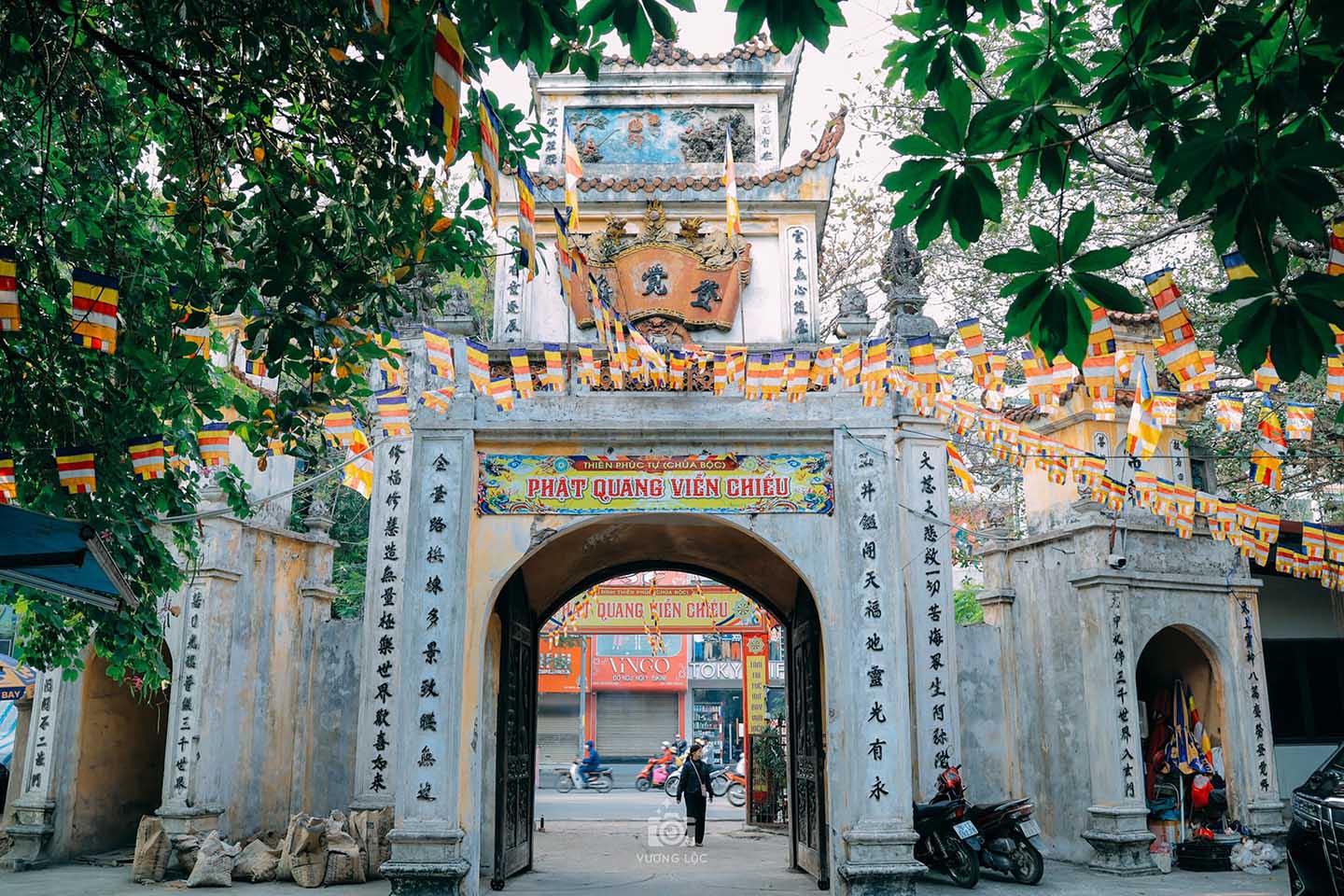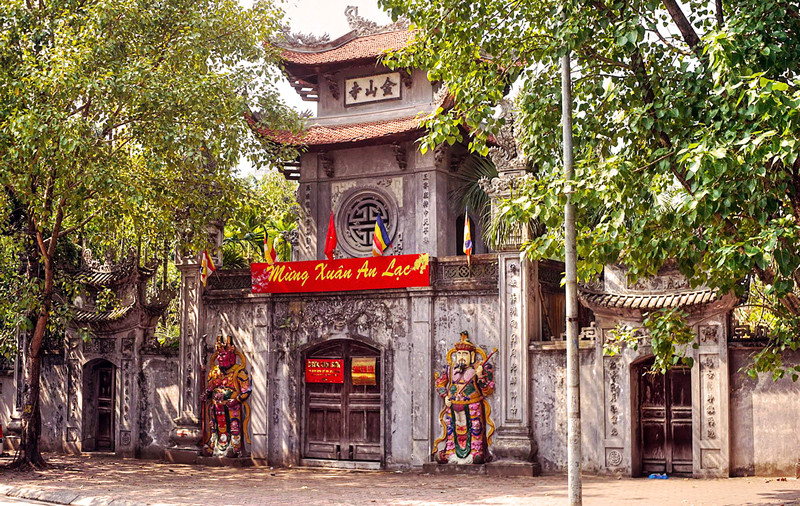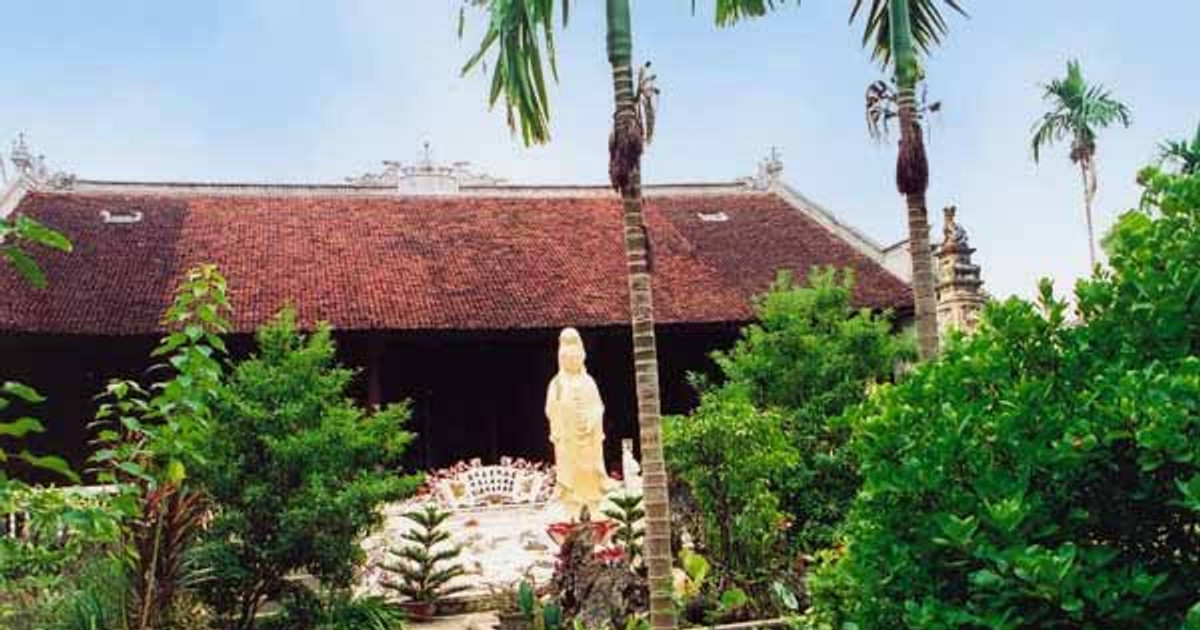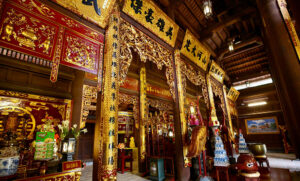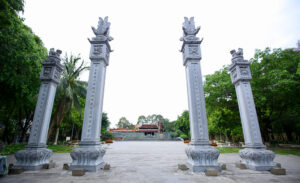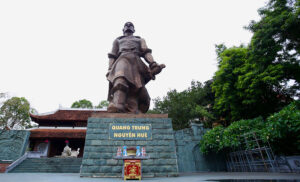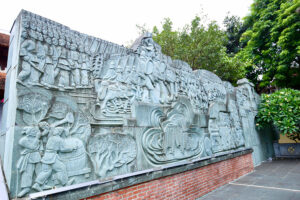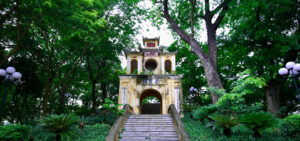Several relic sites associated with Dong Da mound relic site
Boc Pagoda
Boc Pagoda is located on Chua Boc Street, Quang Trung Ward, Dong Da District, named Sung Phuc Pagoda, built during the Later Le Dynasty. The oldest stele of the pagoda still records the year Vinh Tri 01 (1676). The history of the pagoda records that in 1676, during the reign of King Le Hy Tong, the monk Truong Trung Ba and the people restored the pagoda that had been destroyed by war.
In 1789, the pagoda was once again burned in the the Dong Da battle. In 1792, the pagoda was restored on the old ground, as a place of refuge for the souls of the Qing army and was renamed Thien Phuc Pagoda. However, local people still call it Boc Pagoda to refer to enemy corpses being exposed everywhere (“Boc” means “to expose”, the pagoda was built right on the battlefield where enemy corpses being exposed)
The pagoda is closely related to the victory of the Tay Son insurgent army in Ky Dau (1789). Right in front of Boc pagoda, there is still a lake, called the Statue Bathing Lake, where the war elephant formation of the Tay Son insurgent army bathed after defeating the Khuong Thuong garrison. In the pagoda, there is also the relic site of Qing Dynasty Temple, which is the temple to worship Sam Nghi Dong as well as the Qing soldiers who died in the battle. The Qing Dynasty Temple was built under the order of King Quang Trung himself.
Kim Son Pagoda
Kim Son Pagoda is located at 73 Kim Ma Street, Ba Dinh District, Hanoi City. This area was formerly a cemetery, and later the bodies of soldiers who died in the Dong Da battle (1789) were buried in this cemetery. This is also a place to pray for the souls of soldiers who died in the Ngoc Hoi – Dong Da campaign, liberating Thang Long Citadel in the spring of the year Ky Dau (1789).
Dong Quang Pagoda
Dong Quang Pagoda was built in the mid-19th century, is an ancient, sacred pagoda with many historical and cultural values. The pagoda’s name is “Dong Quang Pagoda”, located at 119 Tay Son Street, Quang Trung Ward, Dong Da District, Hanoi City. The pagoda gate is located right next to Tay Son Street, about 400m east of Nam Dong Pagoda, about 500m south of Boc Pagoda. The pagoda is opposite Dong Da Mound and about 20m away from the Mound.
According to the stele recording the history of the pagoda’s construction by Dr. Le Huy Chung in 1856 and the stele recording the pagoda’s restoration in 1915, the area of Thai Ap and Dong Quang Pagoda today was formerly the battlefield of King Quang Trung with the historic Dong Da victory on January 5, 1789 (lunar calendar). In 1843, a governor of Hanoi collected the remains of the fallen soldiers and generals around the battlefield and buried them in a cemetery, then built an open-air altar to worship those souls, where the Lord is enthroned today.
In the year of Tan Hoi 1851, the fourth year of Tu Duc’s reign, Hanoi City opened a market to dig up graves and bury them in that cemetery. Also in that year, Mr. Nguyen Hau, the Viceroy of Tonkin, ordered the digging and collecting of those bones and burying them in the cemetery behind the pagoda. He ordered the construction of a large house to worship Buddha and the souls of the dead, called Dong Quang Pagoda. Dong Quang Pagoda was built to worship the souls of the soldiers and generals of the Dong Da battle and the souls of the unclaimed graves that were buried together in the above cemetery.
The pagoda was ranked as a National Historical, Artistic and Architectural Relic in 1990.



 Tiếng Việt
Tiếng Việt